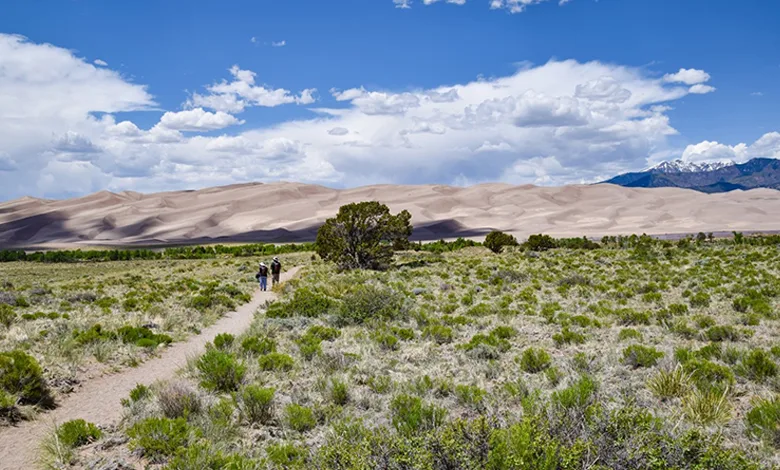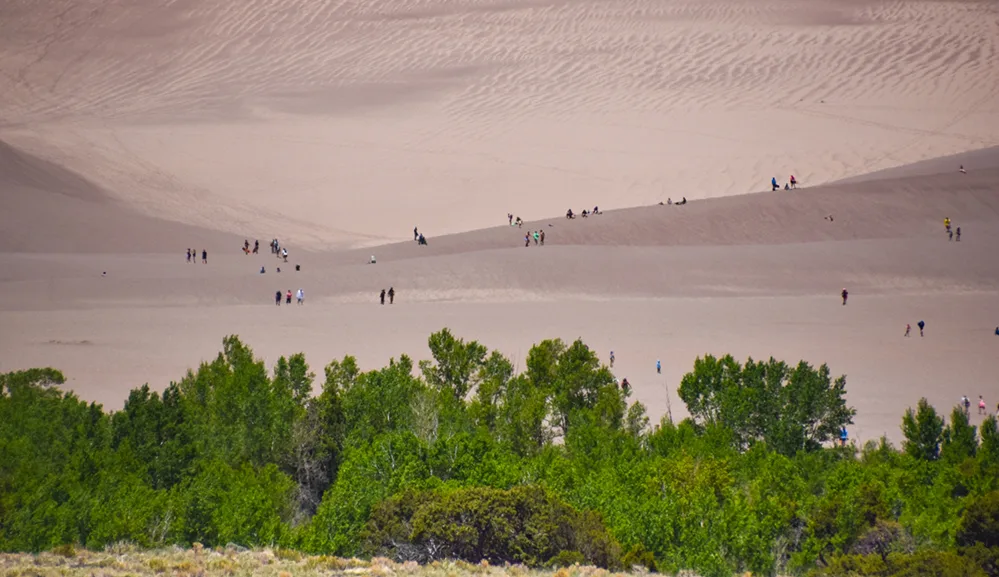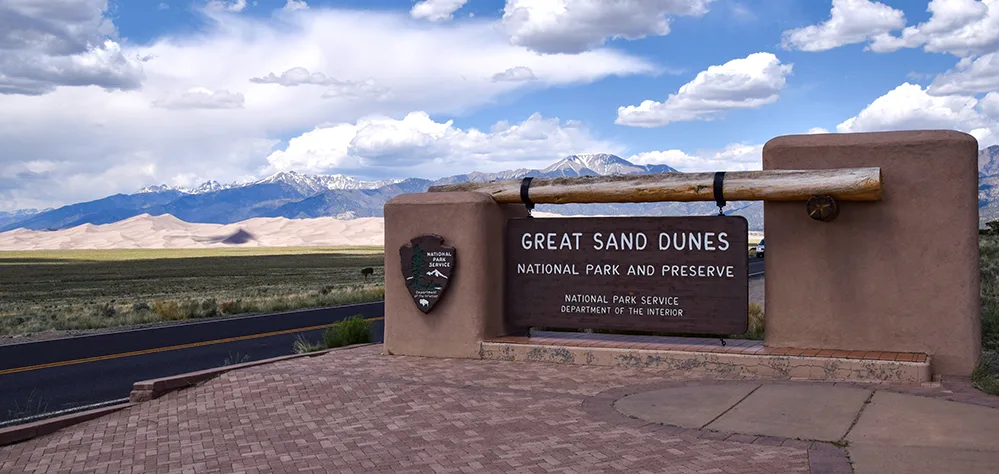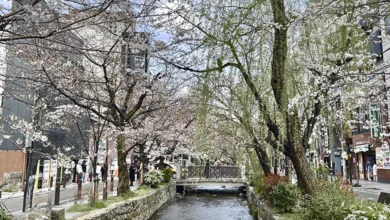Take a Hike! Burning Sand and Towering Dunes: A Great Hike in Colorado

If towering mounds of sand have never sparked your curiosity, a visit to Great Sand Dunes National Park and Preserve might change that. Located about two hours from Pueblo, Colorado, this stunning landscape has been sculpted over millennia by wind and water, carrying sand from nearby mountains and depositing it in a massive, shifting playground. Spanning roughly 30 square miles, the dunes rise to 750 feet—creating the tallest “sandcastles” in North America.
First Glimpse of the Dunes
Approaching the park along Highway 150 in late spring, we first caught sight of the majestic 14,000-foot peaks of the Sangre de Cristo Mountains. About 10 miles out, a pale patch at the mountains’ base began to emerge, gradually taking shape beneath the shadow of the still snow-capped peaks. As we continued along the road, the 1.2 cubic miles of sand became distinct. We couldn’t wait to sink our bare toes into the curious golden grains that looked so out of place—sandwiched between the mountain’s base and the valley to the west. Unfortunately, I had forgotten a key detail about sand and sun!
Choosing the Trail
After a quick stop at the Visitor Center, we had two choices: drive and park a few hundred feet from the dunes or take a short trek along an arid trail behind the Visitor Center. We opted for the latter and encountered just one other like-minded couple along the way.
Bathed in sunshine, the temperature hovered around a pleasant 80 degrees, and the sandy path—an unnamed 0.5-mile connector—was a relatively easy walk to the dunes’ edge. It felt like hiking through a barren wasteland, filled with desert shrubs, dry grasses, and scattered clusters of cacti stretching toward the horizon. With no shade, I can only imagine how intense the heat gets in mid-summer.
A Splash of Surprise
Just before reaching the dunes, we came across a surprising sight: Medano Creek, a wide but shallow stream that was just a few inches deep in places, separating the parking lot from the sand mounds. Dozens of kids splashed joyfully in the water, drawn more to the cool stream than to the towering dunes.

Hotsy-Totsy!
We slipped off our shoes, placed them on dry sand, and waded across. On the other side, I eagerly sprinted up the nearest dune—or at least what counts as sprinting at my age. After about 15 steps, I realized something was wrong: the soles and heels of my feet were on fire!
Yelping, I turned back and dashed to the creek. The sun didn’t feel particularly intense, but I quickly remembered a forgotten physics lesson: sand has a low specific heat capacity, which means it heats up quickly—even when the air feels mild. A painful yet effective reminder.
A Final Climb
With our shoes back on, we crossed the water once more and started climbing the dunes. We held no illusions about reaching the summit. Trudging through deep, soft sand is exhausting, and on a steep slope, it’s downright grueling. We watched in awe as others pushed higher toward the peaks before making our way back to the Visitor Center and our car.
For several days, my feet felt like they had a mild sunburn, but it was a small price to pay for experiencing this remarkable display of nature’s artistry.

Visitor Tips:
- Bring closed-toe shoes— sand gets hot, even in mild weather.
- Visit in spring or fallfor comfortable temperatures.
- Medano Creek typically flowsfrom late May to early July—perfect for wading or splashing!





